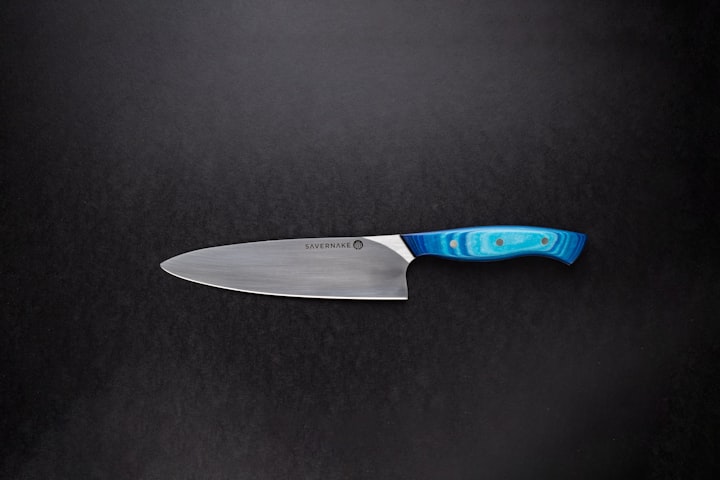"Knives of Death: Uncovering the Deadliest Blades Used in Killings"
Knives of Death

Introduction
Knives have long been a tool of choice for those intent on causing harm, with their sharp edges and compact size making them a deadly weapon in the hands of those willing to use them for nefarious purposes. From the back alleys of urban centers to the remote corners of the world, the use of knives in acts of violence has become a disturbing and all-too-common occurrence.
In this comprehensive examination, we will delve into the world of the deadliest knives used in killings, exploring the unique features and characteristics that make these blades particularly lethal. By understanding the specific knives at the center of these tragic events, we can better comprehend the gravity of the situation and work towards developing more effective strategies to prevent such senseless acts of violence.
The Rise of Knife-Related Homicides
In recent years, the prevalence of knife-related homicides has become a growing concern for law enforcement and public safety officials around the world. While firearms have long been the weapon of choice for those intent on causing mass destruction, the accessibility and ease of use of knives have made them an increasingly common tool in acts of violence.
The Accessibility Factor
One of the primary reasons for the rise in knife-related homicides is the sheer accessibility of these weapons. Knives are ubiquitous in our daily lives, found in kitchens, toolboxes, and even as everyday carry items for some individuals. This widespread availability makes it all too easy for those with malicious intent to obtain and use a knife as a deadly instrument.
The Ease of Use
In addition to their accessibility, knives are also relatively simple to use as a weapon. Unlike firearms, which require a certain level of skill and training to operate effectively, knives can be wielded with little to no specialized knowledge. This low barrier to entry makes them an attractive option for those seeking to inflict harm on others.
The Anatomy of a Deadly Blade
To understand the deadliest knives used in killings, it is essential to examine the specific features and characteristics that contribute to their lethality. From the blade design to the materials used in construction, each element of a knife's anatomy can play a crucial role in its potential to cause severe injury or death.
Blade Design
The shape and design of a knife's blade can have a significant impact on its deadliness. Certain blade styles, such as the tanto or the dagger, are particularly well-suited for penetrating and inflicting deep, potentially fatal wounds. These blades often feature a sharp, pointed tip and a sturdy, rigid construction that can easily pierce through flesh and vital organs.
Blade Material
The material used to construct a knife's blade can also contribute to its deadliness. High-quality, hardened steel blades are generally more durable and capable of maintaining a sharp edge, making them more effective as weapons. Conversely, blades made from softer materials may dull more quickly, reducing their ability to cause severe injury.
Handle Design
While the blade is the most obvious component of a knife, the handle design can also play a role in its deadliness. Ergonomic handles that provide a secure, comfortable grip can enhance the user's control and precision, making it easier to wield the knife effectively as a weapon.
The Most Deadly Knives Used in Killings
Throughout history, certain knives have gained a notorious reputation for their use in acts of violence and homicide. By examining the specific features and characteristics of these deadly blades, we can better understand the gravity of the situation and the challenges faced in addressing this pressing issue.
The Bowie Knife
The Bowie knife, named after its inventor, Jim Bowie, is a large, heavy-bladed knife that has long been associated with violence and frontier justice. With its distinctive clip-point blade and sturdy construction, the Bowie knife is capable of inflicting deep, devastating wounds, making it a particularly deadly choice for those intent on causing harm.
The Hunting Knife
Hunting knives, designed for field dressing and skinning game, often feature long, sharp blades that can be easily repurposed as weapons. The combination of their size, strength, and sharp edges makes hunting knives a formidable choice for those seeking to inflict serious injury or death.
The Tactical Folding Knife
In recent years, the rise in popularity of tactical folding knives has led to concerns about their potential use in violent crimes. These knives, often featuring assisted-opening mechanisms and sturdy, durable blades, can be quickly deployed and wielded with deadly precision, making them a favored choice among those with malicious intentions.
The Psychological Impact of Deadly Knives
The use of deadly knives in acts of violence not only has a physical impact but also a profound psychological effect on both the victims and the broader community. Understanding the emotional and mental toll of these tragic events is crucial in developing comprehensive strategies to address this pressing issue.
The Trauma of Victims
The victims of knife-related attacks often suffer from severe physical and psychological trauma, with the intimate and personal nature of the violence leaving lasting scars. The fear, pain, and sense of violation experienced by these individuals can have a profound and long-lasting impact on their mental health and well-being.
The Community Impact
The ripple effects of knife-related homicides extend far beyond the immediate victims, impacting the broader community as well. The sense of fear, insecurity, and loss that permeates these events can erode the sense of safety and trust within a community, leading to a breakdown in social cohesion and a diminished quality of life for all.
The Challenges in Addressing Knife-Related Violence
Addressing the issue of deadly knives used in killings is a complex and multifaceted challenge, requiring a comprehensive and coordinated approach from various stakeholders, including law enforcement, policymakers, and community organizations.
Legal and Regulatory Obstacles
One of the primary challenges in addressing this issue is the legal and regulatory landscape surrounding knives. In many jurisdictions, the ownership and possession of certain types of knives are not subject to the same level of scrutiny and control as firearms, making it difficult to implement effective policies and interventions.
Societal Attitudes and Perceptions
Another significant obstacle is the deeply ingrained societal attitudes and perceptions surrounding knives. In many cultures, knives are viewed as essential tools for everyday tasks, and the notion of restricting or regulating their use can be met with resistance and opposition.
Lack of Comprehensive Data
The absence of comprehensive, reliable data on the use of knives in acts of violence is another significant challenge. Without a clear understanding of the scope and nature of the problem, it becomes increasingly difficult to develop and implement effective strategies to address it.
Strategies for Preventing Knife-Related Homicides
Despite the challenges, there are several strategies and approaches that can be employed to help prevent and mitigate the use of deadly knives in acts of violence. These include a combination of legislative, educational, and community-based initiatives.
Strengthening Knife Regulations
One potential approach is to strengthen the legal and regulatory framework surrounding the ownership, possession, and use of knives. This could involve implementing stricter licensing requirements, banning the sale of certain types of knives, or enhancing background checks and screening processes for individuals seeking to purchase these weapons.
Promoting Public Awareness and Education
Educating the public about the dangers of deadly knives and the importance of responsible knife ownership and use is another crucial component of a comprehensive strategy. This could involve public awareness campaigns, school-based programs, and community outreach initiatives.
Fostering Community Engagement and Intervention
Engaging with local communities and empowering them to take an active role in addressing knife-related violence is also essential. This could involve the development of community-based programs, mentorship initiatives, and conflict resolution workshops to help address the underlying social and economic factors that contribute to these tragic events.
Conclusion
The use of deadly knives in acts of violence is a complex and multifaceted issue that requires a comprehensive and coordinated approach to address. By understanding the specific features and characteristics of the deadliest blades used in killings, we can better comprehend the gravity of the situation and work towards developing more effective strategies to prevent such senseless acts of violence.
Through a combination of strengthened regulations, public awareness and education, and community engagement, we can work to reduce the prevalence of knife-related homicides and create safer, more resilient communities. It is a daunting challenge, but one that must be confronted with determination and a steadfast commitment to protecting the lives of all individuals.
About the Creator
Mai Sophia
A Writer/blogger by day, a knife enthusiast and survivalist by night. I've reviewed a lot of products and have helped people make the right purchase






Comments (2)
https://www.informativeblog.co.uk/unsheathing-danger-the-top-10-most-deadly-knives-of-all-time/
Read More: https://www.cutlerywholesaler.com/10-deadliest-knives-ever-constructed